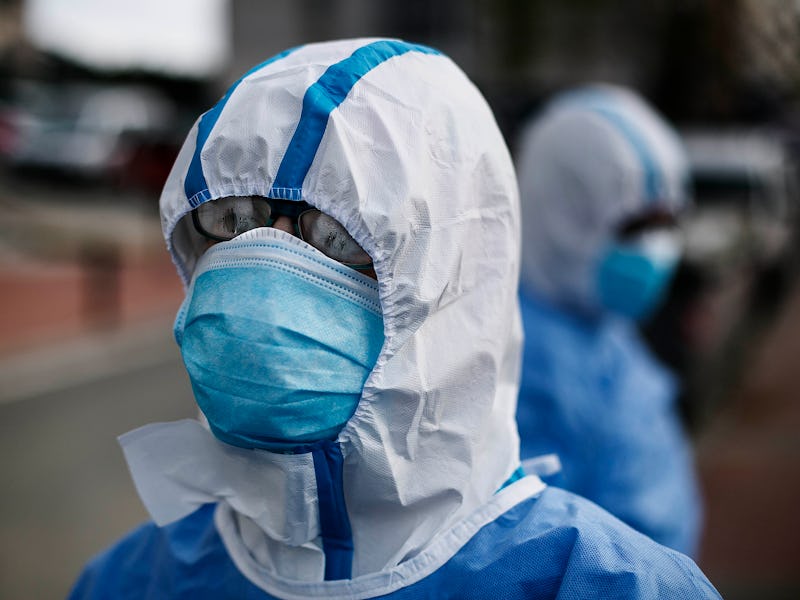Covid-19: new protection could keep doctors from getting infected
A new system hopes to give an added level of protection in hospitals.

One of the major questions amidst the coronavirus pandemic is hospital protection. The virus has proven to not just be novel, but to be unlike any virus humanity has encountered. Hospital acquired infections (HAIs) are always a risk, but coronavirus has brought the HAI threat to new heights, resulting in lawsuits over what the New York State Nurses Association is calling a "war zone."
“More than seven in ten of our nurses are reporting exposure to COVID-19 and most are still untested," NYSNA Executive Director Pat Kane said in a statement. In the battle against coronavirus, HAIs are a major battlefield.
This humbling position calls for radical innovation, and a team out of Israel has developed a new plastic canopy system to protect healthcare workers at risk of coronavirus infection. Their results are detailed in a research letter published in the European Respiratory Journal on Monday.
Respiratory failure is one of the most distinct symptoms of coronavirus. Fighting its symptoms requires artificial ventilation. Generally speaking, artificial ventilation falls into the categories of invasive and non-invasive. Non-invasive ventilation pushes oxygen into the lungs, while continuous positive airway pressure (CPAP), or invasive ventilation, involves inserting a tube into a person’s airway.
The two typically are not in opposition to each other, different patients can require different solutions. But coronavirus has thrown typical to the wolves, with every option being used to help the massive wave of patients seen in places like New York. Invasive ventilators are harder to acquire, meaning that non-invasive ventilation has become increasingly standard. Professor Yochai Adir, from the Lady Davis Carmel Medical Center Pulmonary Division, is worried that non-invasive ventilators are not doing enough to prevent the spread of coronavirus.
"The current crisis has resulted in a shortage of access to negative pressure facilities and invasive mechanical ventilators. This means we must adapt, so that we can continue to treat patients as best we can while protecting the health and safety of healthcare workers,” he says in a press release.
The canopy system and its three components.
Non-invasive ventilation is one solution for this, but it may increase the risk of infection for healthcare workers, as virus particles can become airborne due to mask leakage, the speed and direction of the air flow, or from patient coughing.”
Enter the canopy. “The constant flow canopy system that we designed and built addresses this risk, by eliminating healthcare workers' exposure to this potentially dangerous situation," Adir says. Resembling a baby’s stroller, the canopy establishes an air chamber which covers the top half of a patient’s body. Outside of the canopy, the apparatus is connected to a high-quality air filter that cleans the air, and is then connected to an electrical fan system that creates negative pressure.
Pressure management is crucial for fighting respiratory illness. A guide written by the Minnesota Department of Health explains: “for a negative pressure room, the sum of the mechanically exhausted air must exceed the sum of the mechanically supplied air. This offset forces air to enter the room under the door and through other leakages and prevents infectious particles from escaping.”
With the electrical fans creating negative pressure, the canopy becomes more airtight than any non-invasive system. Capable of preventing fluids or particles to pass through, the system, which can handle four patients at a time, has been tested against international standards.
Perhaps the ultimate endorsement, though, comes from Professor Adir and the staff at Lady Davis Carmel, who have started using the canopies in their treatment.
"We installed this cost-effective system within our hospital and found it supports the delivery of non-invasive ventilatory support with minimal risk of infection for the medical staff,” Professor Adir says.”It enables alternatives to mechanical ventilation for patients with moderate to severe coronavirus infection, who may otherwise go untreated because of a shortage of equipment."
There have been several innovations to cover the weak spots that masks may miss. Another has been 3D-printed face shields.